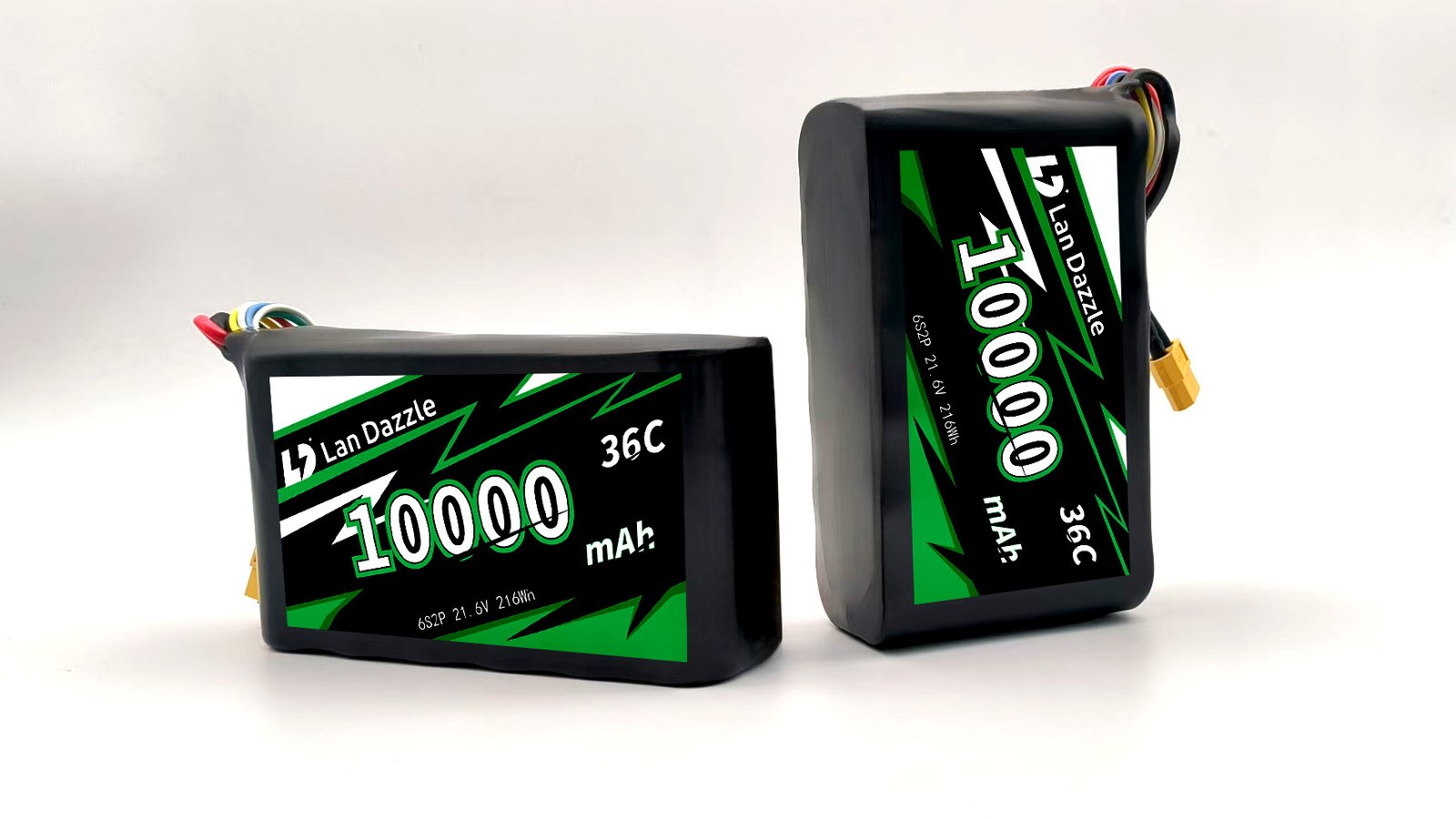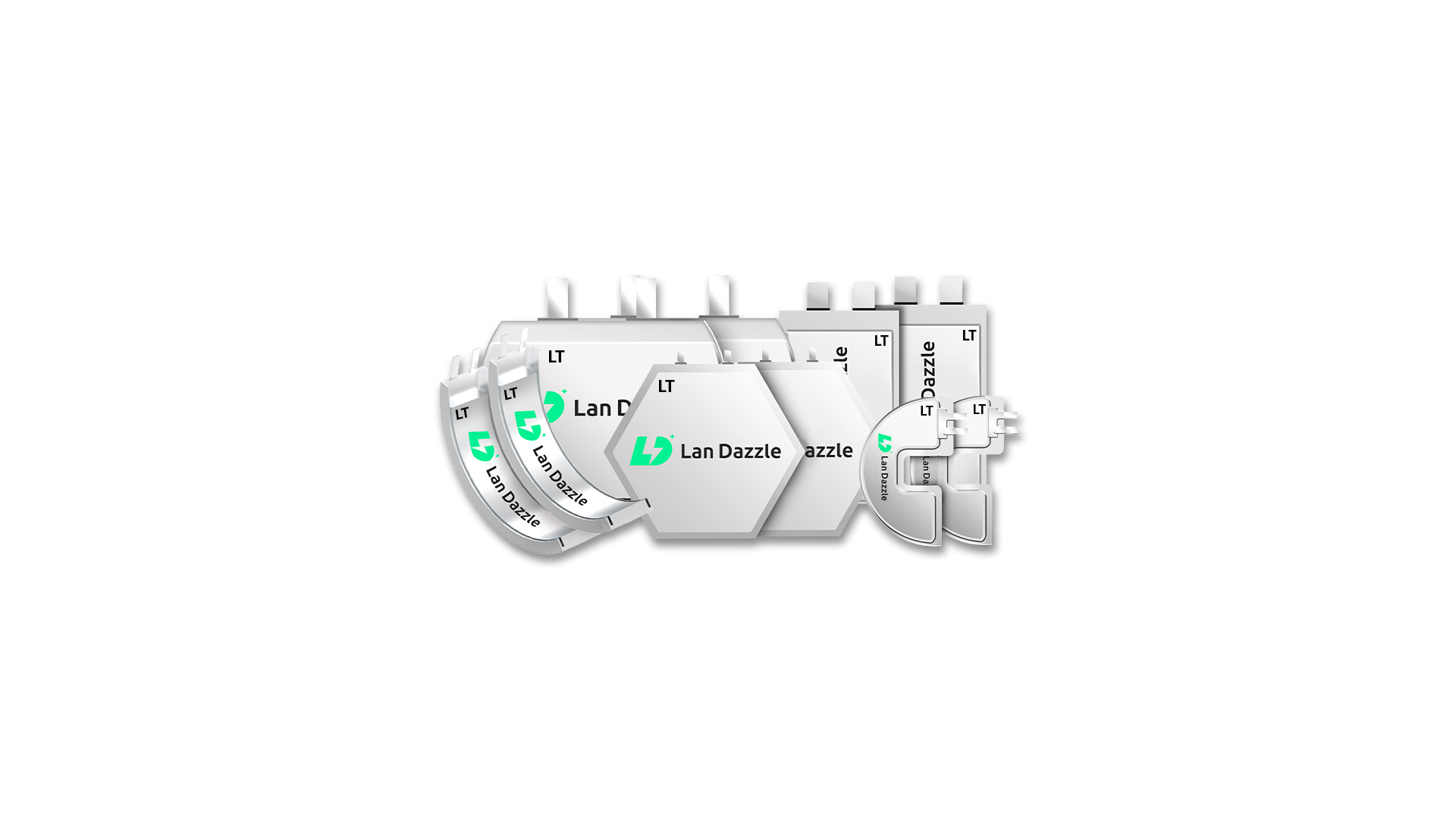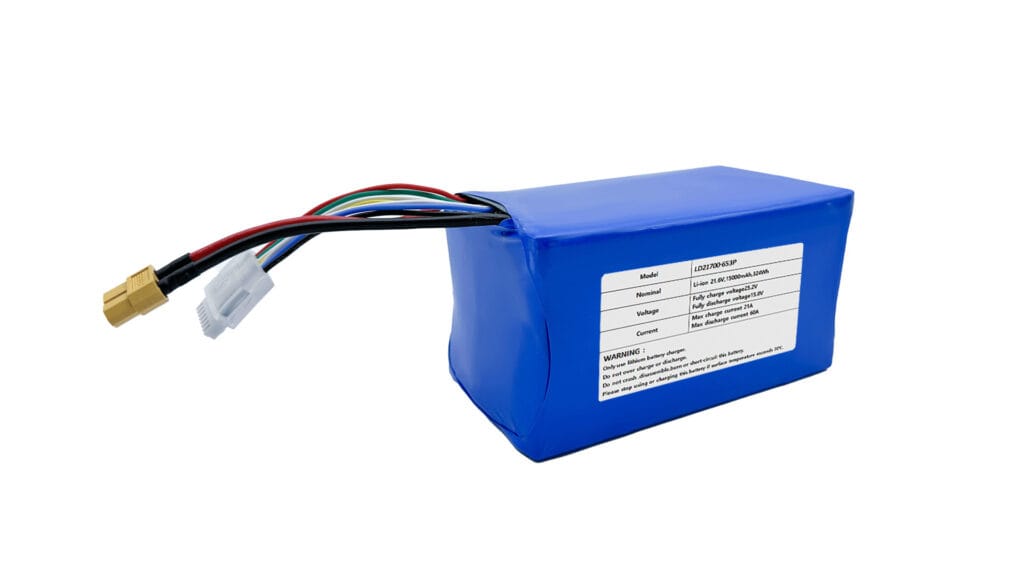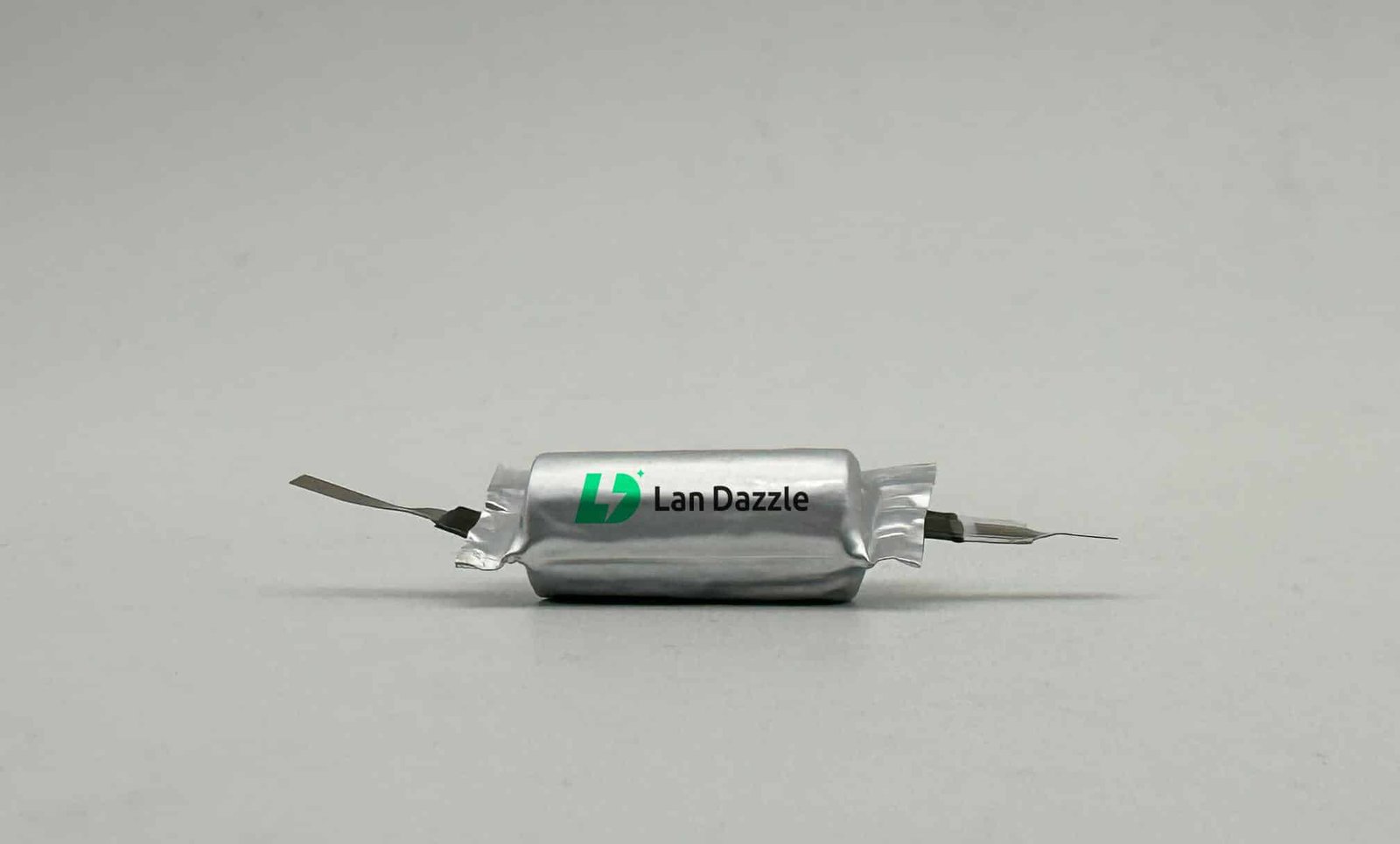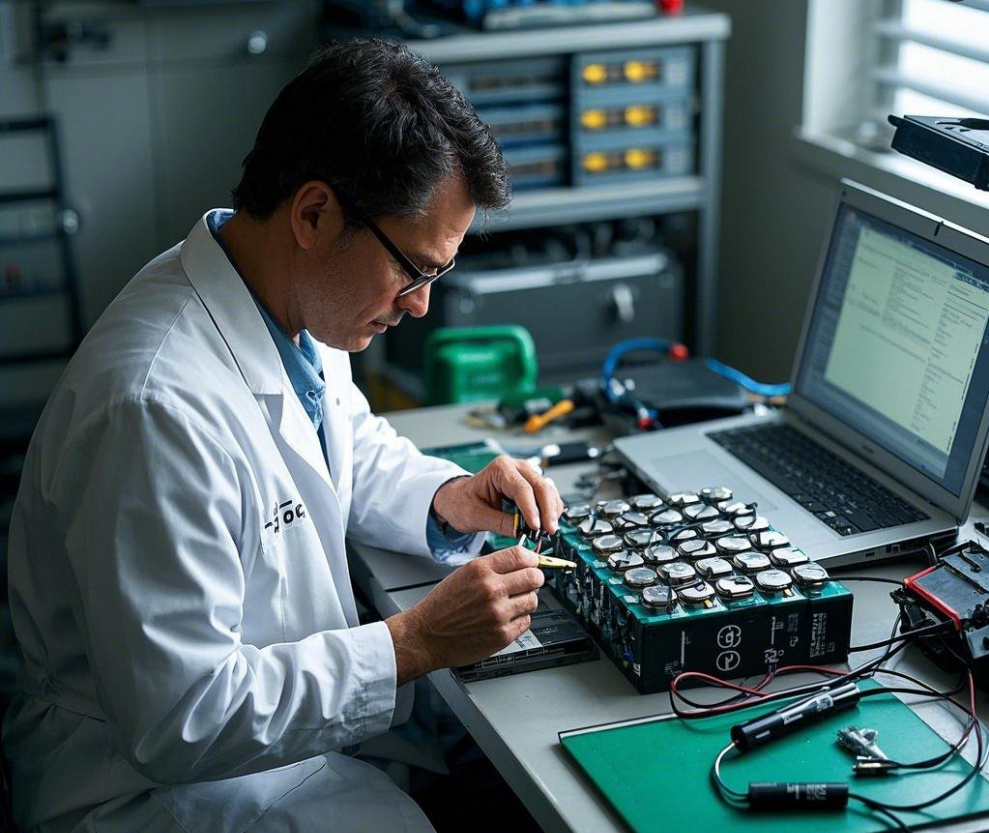Введение
Choosing the right battery pack can make or break your project—whether you’re building a high-performance FPV drone, a commuter e-bike, or a powerful cordless tool. Two of the most popular options on the market today are 21700 battery pack vs LiPo battery pack. We’ll explore energy density, discharge rates, weight, cycle life, safety considerations, cost, real-world applications, and maintenance tips. By the end, you’ll know exactly which pack aligns best with your needs, whether you prioritize runtime, form factor, or peak power.
Overview of Батарейные блоки 21700
A 21700 cell is a cylindrical lithium-ion cell measuring 21 mm in diameter and 70 mm in length. Developed as an upgrade from the older 18650 format, 21700 cells typically employ NMC (nickel manganese cobalt oxide) or NCA (nickel cobalt aluminum oxide) chemistries, providing a nominal voltage of 3.6–3.7 V per cell. In a pack, multiple 21700 cells are arranged in series and parallel configurations, protected by a Battery Management System (BMS) that manages cell balancing, overcharge/discharge protection, and temperature monitoring. The rigid aluminum shell of each cylindrical cell offers mechanical resilience and helps dissipate heat more effectively than flat pouch designs, improving safety during sustained high-drain usage.
Typical single 21700 cells deliver 3,000–5,000 mAh capacity. For instance, a 4,500 mAh cell at 3.6 V stores ~16.2 Wh, weighing ~65–70 g—resulting in ~230–250 Wh/kg gravimetric energy density. Premium 5,000 mAh variants push that to ~265 Wh/kg. Packs often use BMS circuitry to manage up to 10 – 15 cells in series, creating nominal pack voltages from 36 V (10S) to 48 V (13S) for e-bikes, power tools, and portable power stations. Continuous discharge ratings for quality 21700 cells typically range 5 – 10 C (e.g., a 5,000 mAh cell delivering 25 A to 50 A continuously), with some high-drain variants reaching up to 20 – 35 C (up to 150 A pulses).
In real-world use, many e-bike and power tool manufacturers have transitioned from 18650 to 21700 to leverage the higher capacity (up to 5 Ah vs 3 Ah) and improved energy density. Tesla’s shift in 2017 to 21700 for the Model 3’s battery modules showcased an energy density of ~298 Wh/kg and a cost drop to $155/kWh from $171/kWh with 18650 packs—an ~9 % cost saving per kWh. In power tools, switching to 21700 cells allowed peak output to jump from roughly 800 W (with 18650) to 1,440 W—an 80 % increase in power potential.
Overview of LiPo Battery Packs
Lithium polymer (LiPo) packs use pouch-style cells, which are thin, flexible “sandwiches” of polymer electrolyte sheets between laminated foil electrodes, sealed in lightweight foil pouches. Each cell has a nominal voltage of 3.7 V, similar to cylindrical lithium-ion, but the absence of a rigid metal can allows LiPo cells to be shaped to fit tight spaces and form factors that would be impossible with cylindrical cells. Standard hobby LiPo configurations range from 2S (7.4 V nominal) up to 6S (22.2 V nominal) for drones, RC cars, and other high-power applications.
LiPo packs excel in high discharge scenarios. A typical 4S 1,300 mAh “racing” LiPo rated at 100 C can output 130 A continuous and up to 200 A in bursts, allowing FPV drones to achieve rapid throttle response and sustained high-G maneuvers. Broadly, LiPo packs advertise energy densities of 150 – 250 Wh/kg (7–15 Wh per cell at ~100 g weight) and volumetric densities of 250 – 500 Wh/L. However, their cycle life is lower—typically 300–500 cycles before 80 % capacity remains, especially if deeply discharged each cycle.
Because LiPo pouches lack a protective metal shell, they require rigid external support in applications (e.g., drone frames or custom enclosures) and careful handling to avoid punctures. Balance charging is mandatory: each parallel cell group must be precisely monitored at 4.20 V per cell during charging to prevent overcharge, which could lead to swelling or thermal runaway. Hobby LiPo packs are ubiquitous in RC and drone markets due to their high specific power (peak C-rates) and versatility to fit slender profiles in racing quads, wearable gadgets, and custom electronics.
Technical Comparison
Energy Density & Capacity
21700 cells currently achieve some of the highest commercially available gravimetric densities in cylindrical form—up to ~300 Wh/kg for premium NMC variants, with nominal energy per cell of 16 – 18 Wh (4,500–5,000 mAh at 3.6 V). In contrast, LiPo pouch cells typically range 150–250 Wh/kg (7–15 Wh per cell at 100 g), depending on chemistry and pouch thickness.
Volumetrically, LiPo can exceed 300 Wh/L because the pouch structure occupies less empty space than cylindrical cells. A 4S 3,000 mAh LiPo (11.1 V nominal) holds 33.3 Wh at ~140 g, translating to ~238 Wh/kg and ~300 Wh/L (≈110 mL pouch). By comparison, a 3 × 21700 cylindrical pack (3S1P, 11.1 V nominal, 4,500 mAh) weighs ~200–220 g, storing ~50 Wh (≈227 Wh/kg), but because of cylindrical voids, volumetric density is ~250 Wh/L.
In real-world applications, the slightly higher gravimetric density of 21700 may translate to marginally longer runtimes under steady load. However, LiPo’s volumetric advantage often allows a larger pack in the same cavity if height is not a constraint—crucial for slimmest drone frames or handheld electronics.
Discharge Rate (C-Rate)
LiPo packs dominate in peak C-rate due to low internal resistance and flexible pouch structure. A “standard” 4S 1,300 mAh 30 C LiPo can safely deliver 39 A continuous, with bursts up to ~60 A. Racing-grade LiPo (100 C) can reach 130 A continuous and over 200 A in short bursts, providing instant throttle response for aggressive maneuvers. The downside: sustained high currents generate heat in the pouch, risking delamination or swelling if not kept cool.
21700 cells, even high-drain variants, typically advertise continuous C-rates of 5 – 10 C. For example, a 5,000 mAh 21700 delivering 10 C yields 50 A continuous, with pulse ratings up to 100 A in some premium models. High-drain 21700s (e.g., “40 T”) can provide 20 C (100 A) continuous, with a slightly higher internal resistance causing moderate voltage sag under heavy draw. In extended high-current scenarios, the cylindrical design allows better heat dispersal: packs with proper cooling jackets can sustain higher currents longer than LiPo before thermal throttling occurs.
Weight & Size
A single 21700 cell typically weighs 60 – 75 g and measures 21 × 70 mm. In a 3S (11.1 V) 4,500 mAh configuration (3 × 21700 in series), the pack weight is ~210 g, dimensions roughly 80 × 60 × 65 mm (excluding packaging). The cylindrical form factor can leave empty spaces when cells are grouped, slightly reducing volumetric efficiency.
Conversely, a 3S LiPo pouch pack (11.1 V, 4,500 mAh) often weighs ~180–200 g but can be shaped to ~100 × 50 × 20 mm, fitting tight cavities that cylindrical packs can’t. If minimal thickness is crucial—like in a slim FPV frame or wearable device—LiPo excels. However, because LiPo must include extra padding for mechanical support and often comes with a bulky connector pigtail, overall pack thickness can be slightly higher than spec. For applications where height is plentiful but area is limited (e.g., power tools), a 21700 pack can be more space-efficient.
Cycle Life & Longevity
21700 cells generally offer 500–1,000 full cycles (0 % to 100 % depth of discharge) at room temperature before capacity drops to 80 %. Moderate usage (shallow discharges < 80 % DoD, adequate BMS protection) can push lifecycles beyond 1,000 cycles. LiPo pouch cells, however, average 300–500 cycles before reaching 80 % capacity, especially if regularly discharged beyond 80 % of full charge. Aggressive high-C usage can further reduce LiPo lifespan to 200–300 cycles.
Long-term, 21700 packs outperform LiPo in applications with daily moderate draws (e-bikes, power tools). A commuter e-bike with a properly managed 21700 pack can exceed 1,000 cycles (3–4 years of daily use). A racing drone relying on LiPo may need new batteries each year if flown intensively (> 300 cycles).
Safety & Thermal Performance
LiPo packs are more sensitive to overcharging, puncture, and swelling due to polymer electrolyte. Charging beyond 4.20 V per cell or physical damage can lead to exothermic reactions, causing gas buildup, pouch swelling, and potential thermal runaway. Recommended safety measures include balance charging, storage at ~3.8 V per cell, and using fireproof LiPo bags. Thermal runaway typically begins around 140–150 °C for LiPo pouches.
21700 cylindrical cells feature a rigid metal shell and internal safety mechanisms (CID—current interrupt device, pressure relief vents) that prevent catastrophic failure. Many 21700 cells include built-in PTC (positive temperature coefficient) devices and shutdown separators that break circuit under overheating. External BMS layers add overcharge and overdischarge protection. A typical thermal runaway threshold for 21700 NMC cells is ~150–160 °C. Cylindrical design also disperses heat more uniformly, reducing local hot spots during high-C discharge.
Overall, 21700 packs are considered safer in sustained high-current applications (power tools, e-bikes), whereas LiPo packs require vigilant monitoring and disciplined charging/discharging cycles, especially in confined drone frames.
Applications & Use Cases
21700 Battery Pack Applications
-
Electric Bicycles (E-Bikes): Many mid-range e-bike manufacturers adopted 21700 packs in 2024 for their higher capacity (12 Ah ≈ 432 Wh in 36 V), extended cycle life (~1,000 cycles), and robust performance in cold temperatures (–20 °C to 60 °C). Switching from 18650 to 21700 gave ~20 % more range per charge at similar weight.
-
Электроинструменты: Cordless drills and saws benefit from 21700’s sustained discharge. A power tool pack with 21700 cells can deliver 1,440 W peak, whereas 18650 packs topped at 800 W—improving torque and runtime.
-
Портативные электростанции: 21700 packs in 12 V – 48 V modules power camping/recreation kits, offering 500–1,000 Wh capacities at 220–260 Wh/kg.
-
High-Performance Flashlights: High-output tactical flashlights switched to 21700 for ~4,000 mAh capacity, extending maximum lumen output durations.
LiPo Battery Pack Applications
-
FPV Drones & RC Vehicles: Racing and freestyle FPV enthusiasts rely on 4S–6S LiPo packs rated 30 – 100 C for instantaneous throttle bursts and low weight. A 4S 1,300 mAh 95 C pack (approx. 130 g) is a staple in 5″ freestyle builds.
-
Wearable Electronics & Smart Devices: Ultra-thin LiPo prismatic cells (e.g., 20 × 30 × 4 mm) fit curved smartwatch housings and fitness bands.
-
Custom Robotics & UAV Prototypes: Pouch shape flexibility enables embedding cells within unconventional chassis boundaries.
-
Portable Medical Devices: Slim LiPo cells power CPAP machines and insulin pumps due to compact form factors and predictable discharge curves.
Hybrid/Custom Solutions
-
Some professional drone builders employ a small 21700 buffer pack in tandem with a high-C LiPo front-end to balance peak power and endurance. For example, a cinematography drone may use a 3 Ah LiPo for quick camera startup, coupled with a 10 Ah 21700 pack for cruising efficiency.
Maintenance & Safety Considerations
Charging Protocols
-
LiPo Packs: Always use a dedicated balance charger that monitors each cell group at 4.20 V during charge. Never exceed recommended charge rates (1 C–2 C). Store LiPo at storage voltage (~3.8 V per cell) if not used for > 48 hours. Discharge cutoff is typically 3.0 V per cell; avoid deep discharge below 3.3 V to extend cycle life.
-
21700 Packs: Use a compatible charger with a BMS that limits charge to 4.20 V per cell. Charge rates should be ≤ 1 C (e.g., a 4,500 mAh cell at 4.5 A) to maximize longevity. Discharge cutoff ~2.5–2.8 V per cell; avoid complete depletion to protect cell chemistry.
Storage & Disposal
-
LiPo: Store in a LiPo Safe bag/foam box at ~50 % state of charge (3.8 V/cell). Inspect for swelling/swollen pouches—dispose at certified e-waste centers if capacity falls below 80 % or cells swell. Do not stack LiPo packs, as one thermal event can cascade.
-
21700: Store at ~40 % SoC (~3.6 V per cell) in a cool (< 25 °C), dry, fire-safe container. Periodically check voltage if stored > 6 months. Recycle at designated Li-ion drop-off points or via manufacturer programs.
Safety Gear & Monitoring
-
Use temperature sensors or thermal cameras when charging/discharging at high loads. Avoid ambient extremes (< –10 °C or > 50 °C) for both chemistries. Inspect packs visually: obvious dents, exposed foil, or abnormal swelling are red flags. For LiPo, always have a fire extinguisher rated for lithium fires nearby when charging.
Choosing the Right Battery Pack
-
Define Your Use Case & Discharge Requirements
-
High-Peak Loads (Racing Drones, RC Cars): LiPo is unmatched for instant high current (≥ 20 C).
-
Sustained Medium Loads (E-Bikes, Power Tools): 21700 excels—provides stable voltage under continuous discharge (5 – 10 C) and better thermal handling.
-
-
Form Factor & Weight Constraints
-
Slim or Unusually Shaped Devices (Wearables, Curved Housings): LiPo’s flexible pouch fits spaces cylindrical packs cannot.
-
Tubes or Cylindrical Compartments (Flashlights, Tool Grips): 21700 fits natively without extra support.
-
-
Budget vs. Longevity
-
LiPo: Lower upfront cost (≈$20–$50 for a 3–4 Ah pack) but typically ≤ 500 cycles → replaced every 12–18 months if used heavily.
-
21700: Higher initial investment ($100–$300 depending on pack size), but ≥ 1,000 cycles under moderate use—cost per cycle often lower in 2–3 years.
-
-
Safety & Maintenance Willingness
-
LiPo: Requires disciplined balance charging, storage in fireproof containers. More risk if punctured.
-
21700: Generally safer thanks to metal can and onboard BMS. Still requires basic care: no deep discharge, avoid extreme heat.
-
-
Environmental & Regulatory Considerations
-
Shipping: LiPo packs often face stricter shipping restrictions (IATA regulations) due to swelling risk. 21700 packs with certified BMS are easier to transport.
-
Quick Decision Matrix:
| Приложение | Recommended Pack | Rationale |
|---|---|---|
| FPV Racing Drone | LiPo | Highest C-rate, lightweight, flexible fit. |
| Commuter E-Bike | 21700 | Better cycle life, energy density, thermal stability. |
| Portable Power Station | 21700 | Higher cycle life, easier to implement BMS, safer. |
| Wearable Device | LiPo | Ultra-thin form factor, flexible for curved designs. |
| Электроинструменты | 21700 | Sustained high power, improved runtime over 18650. |
Заключение
Choosing between a 21700 battery pack and a LiPo battery pack boils down to balancing energy density, discharge demands, form factor, cost, and safety. Always assess your specific use case—peak load, available volume, budget, and maintenance willingness—before making a final decision. With the data presented here, you’re equipped to select the perfect battery pack for your project.
If you’re looking for a reliable, high-performance 21700 battery solution, Lan Dazzle has you covered. As a leading custom battery manufacturer with our own factory, we specialize in crafting 21700 packs tailored to your exact requirements—whether for drones, power tools, e-bikes, or industrial applications.
For custom design inquiries or to learn more, contact us at info@landazzle.com. Whether you need a high-C-rate pack for competitive FPV or a long-lasting pack for commercial e-bikes, Lan Dazzle is your trusted partner in advanced lithium battery solutions.
